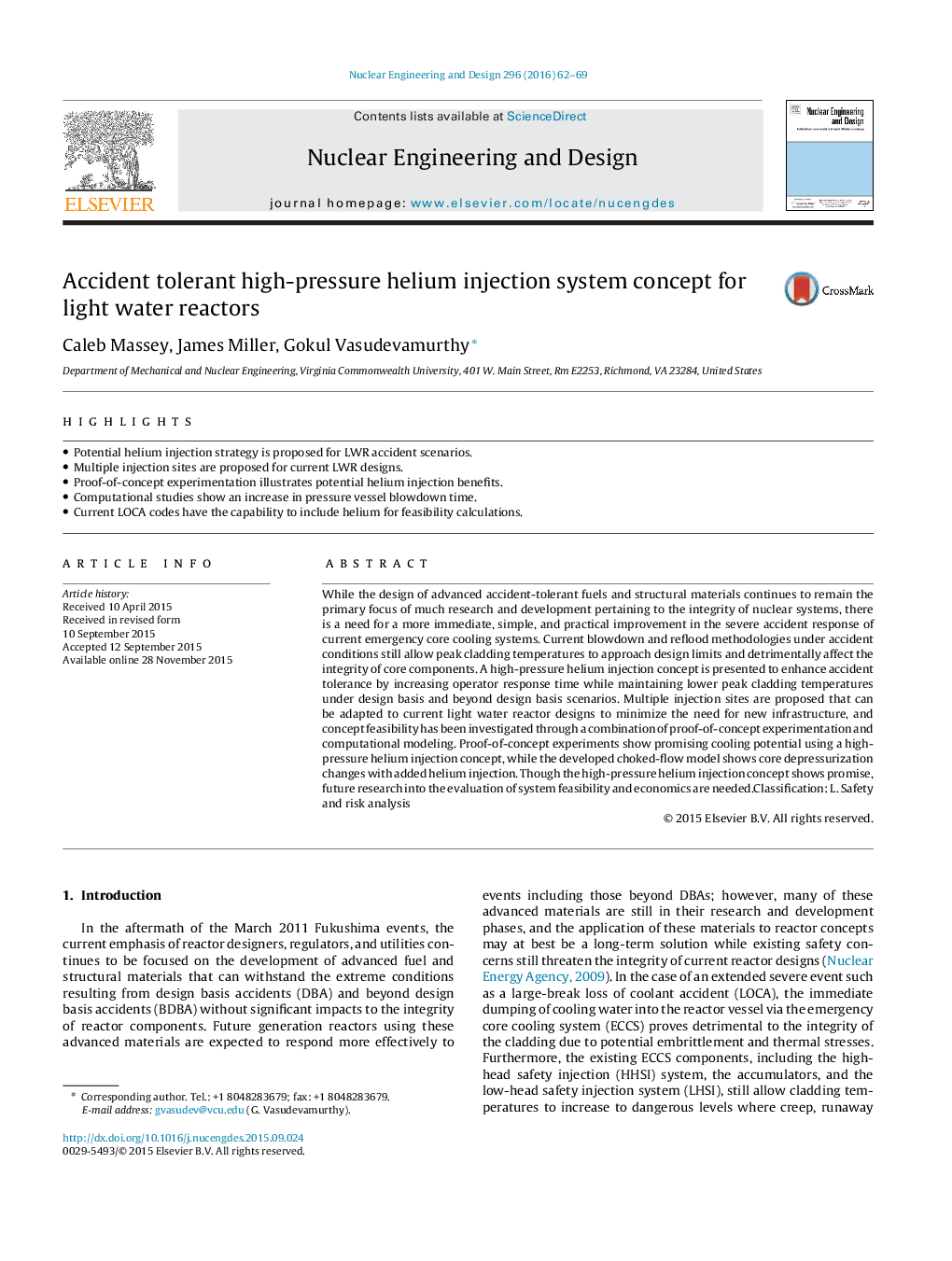| کد مقاله | کد نشریه | سال انتشار | مقاله انگلیسی | نسخه تمام متن |
|---|---|---|---|---|
| 296086 | 511706 | 2016 | 8 صفحه PDF | دانلود رایگان |
• Potential helium injection strategy is proposed for LWR accident scenarios.
• Multiple injection sites are proposed for current LWR designs.
• Proof-of-concept experimentation illustrates potential helium injection benefits.
• Computational studies show an increase in pressure vessel blowdown time.
• Current LOCA codes have the capability to include helium for feasibility calculations.
While the design of advanced accident-tolerant fuels and structural materials continues to remain the primary focus of much research and development pertaining to the integrity of nuclear systems, there is a need for a more immediate, simple, and practical improvement in the severe accident response of current emergency core cooling systems. Current blowdown and reflood methodologies under accident conditions still allow peak cladding temperatures to approach design limits and detrimentally affect the integrity of core components. A high-pressure helium injection concept is presented to enhance accident tolerance by increasing operator response time while maintaining lower peak cladding temperatures under design basis and beyond design basis scenarios. Multiple injection sites are proposed that can be adapted to current light water reactor designs to minimize the need for new infrastructure, and concept feasibility has been investigated through a combination of proof-of-concept experimentation and computational modeling. Proof-of-concept experiments show promising cooling potential using a high-pressure helium injection concept, while the developed choked-flow model shows core depressurization changes with added helium injection. Though the high-pressure helium injection concept shows promise, future research into the evaluation of system feasibility and economics are needed.Classification: L. Safety and risk analysis
Journal: Nuclear Engineering and Design - Volume 296, January 2016, Pages 62–69
